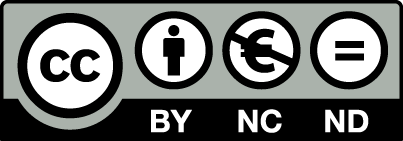Please use this identifier to cite or link to this item:
http://hdl.handle.net/2445/171676| Title: | Investigation of halotolerant marine Staphylococcus sp. CO100, as a promising hydrocarbon-degrading and biosurfactant-producing bacterium, under saline conditions |
| Author: | Hentati, Dorra Cheffi, Merian Hadrich, Fatma Makloufi, Neila Rabanal Anglada, Francesc Manresa Presas, Ma. Ángeles (María Ángeles) Sayadi, Sami Chamkha, Mohamed |
| Keywords: | Hidrocarburs Bioremediació Staphylococcus aureus Hydrocarbons Bioremediation Staphylococcus aureus |
| Issue Date: | 1-Jan-2021 |
| Publisher: | Elsevier |
| Abstract: | A halotolerant strain CO100 of Staphylococcus sp. was isolated from contaminated sediments taken from the fishing harbour of Sfax, Tunisia, as an efficient hydrocarbonoclastic candidate. Strain CO100 exhibited a high capacity to break down almost 72% of the aliphatic hydrocarbons contained in crude oil (1%, v/v), used as the sole carbon and energy source, after 20 days of culture, at 100 g/l NaCl, 37 ◦C and 180 rpm. The isolate CO100 displayed also its ability to grow on phenanthrene, fluoranthene and pyrene (100 mg/l), at 100 g/l NaCl. Moreover, the isolate CO100 showed a notable aptitude to synthesize an efficient tensioactive agent namely BSCO100, on low-value substrates including residual frying oil and expired milk powder, thus reducing the high cost of biosurfactant production. The ESI/MS analysis designated that BS-CO100 belonged to lipopeptide class, in particular lichenysin and iturine members. Critical micelle concentrations of BS-CO100 were varying between 65 and 750 mg/l, depending on of the purity of the biosurfactant and the used carbon sources. BS-CO100 showed a high steadiness against a wide spectrum of pH (4.3-12), temperature (4-121 ◦C) and salinity (0-300 g/l NaCl), supporting its powerful tensioactive properties under various environmental conditions. Likewise, BS-CO100 exhibited no cytotoxic effect toward human HEK293 cells, at concentrations within 125 and 1000 μg/ml. Furthermore, the biosurfactant BS-CO100 exhibited remarkable anti-adhesive and anti-biofilm activities, being able to avoid and disrupt the biofilm formation by certain pathogenic microorganisms. In addition, BS-CO100 was found to have more potential to remove hydrocarbons from contaminated soils, compared to some chemical surfactants. In light of these promising findings, strain CO100, as well as its biosurfactant, could be successfully used in different biotechnological applications including the bioremediation of oil-polluted areas, even under saline conditions. |
| Note: | Versió postprint del document publicat a: https://doi.org/10.1016/j.jenvman.2020.111480 |
| It is part of: | Journal of Environmental Management, 2021, vol. 277, num. 111480 |
| URI: | http://hdl.handle.net/2445/171676 |
| Related resource: | https://doi.org/10.1016/j.jenvman.2020.111480 |
| ISSN: | 0301-4797 |
| Appears in Collections: | Articles publicats en revistes (Química Inorgànica i Orgànica) |
Files in This Item:
| File | Description | Size | Format | |
|---|---|---|---|---|
| 703830.pdf | 1.26 MB | Adobe PDF | View/Open |
This item is licensed under a
Creative Commons License



